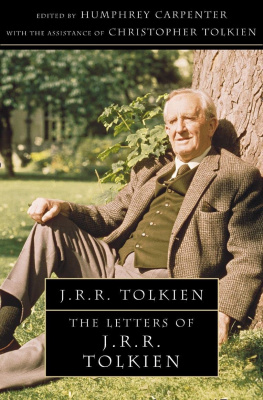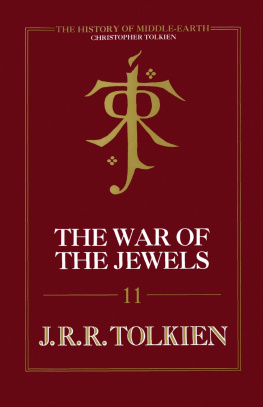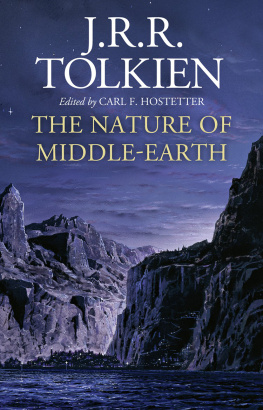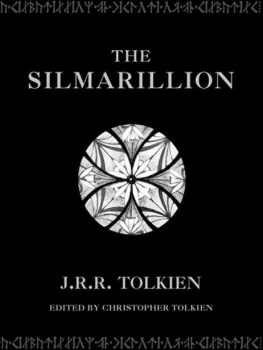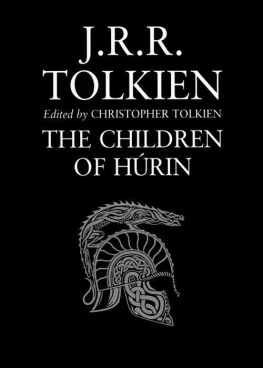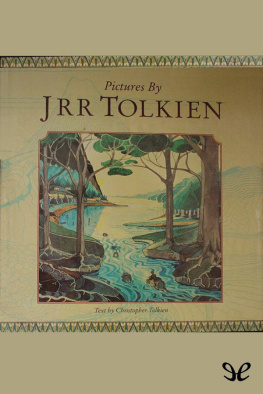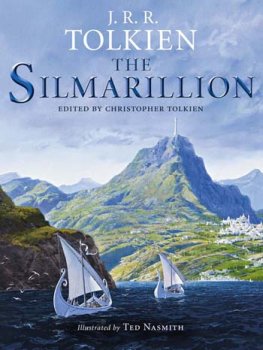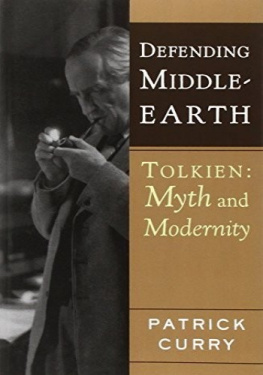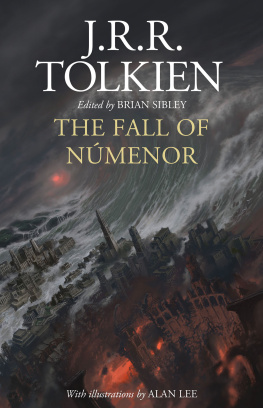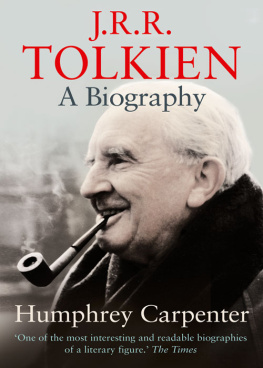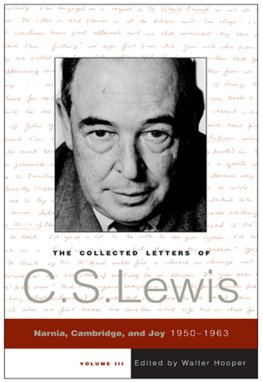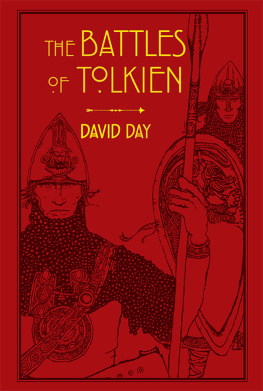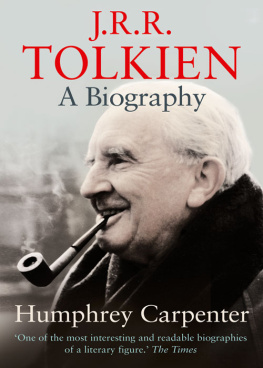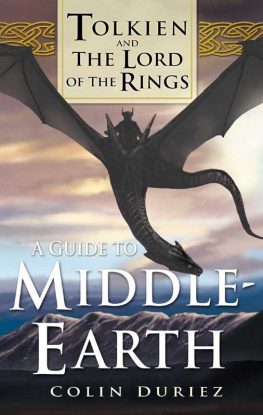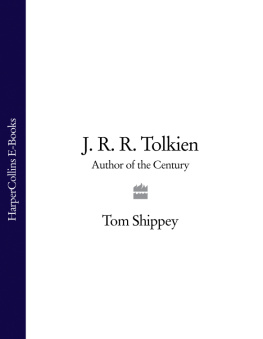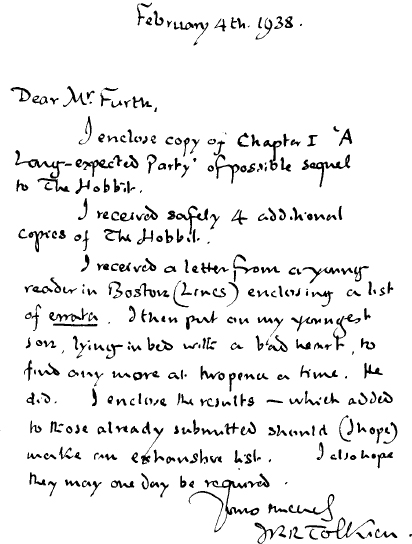THE LETTERS OF J.R.R. TOLKIEN
February 4th. 1938.
Dear Mr Furth,
I enclose copy of Chapter I A Long-expected Party of possible sequel to the Hobbit.
I received safely 4 additional copies of The Hobbit.
I received a letter from a young reader in Boston (Lincs) enclosing a list of errata. I then put on my youngest son, lying in bed with a bad heart, to find any more at two pence a time. He did. I enclose the results which added to those already submitted should (I hope) make an exhaustive list. I also hope they may one day be required.
Yours sincerely
JRR Tolkien
Contents
Towards the end of his life, J. R. R. Tolkien was deprived for a few weeks of the use of his right arm. He told his publisher: I found not being able to use a pen or pencil as defeating as the loss of her beak would be to a hen.
An immense amount of Tolkiens time was taken up with the written word: not just his academic work and the stories of Middle-earth, but also letters. Many of these had to be written in the way of business, but in any case letter-writing was on most occasions a favourite activity with him. The consequence is that an immense number of letters by Tolkien survive; and when, with the help of Christopher Tolkien, I began work on this selection, it became obvious that an enormous quantity of material would have to be omitted, and that only passages of particular interest could be included. Naturally, priority has been given to those letters where Tolkien discusses his own books; but the selection has also been made with an eye to demonstrating the huge range of Tolkiens mind and interests, and his idiosyncratic but always clear view of the world.
Among the omissions is the very large body of letters he wrote between 1913 and 1918 to Edith Bratt, who was his fiance and then his wife; these are highly personal in character, and from them I have chosen only a few passages which refer to writings in which Tolkien was engaged at the time. Between 1918 and 1937 few letters survive, and such as have been preserved record (unfortunately) nothing about Tolkiens work on The Silmarillion and The Hobbit, which he was writing at this time. But from 1937 onwards there is an unbroken series of letters to the end of his life, giving, often in great detail, an account of the writing of The Lord of the Rings, and of later work on The Silmarillion, and often including lengthy discussions of the meaning of his writings.
Within the letters chosen for publication, all passages omitted have been indicated by a row of four dots, thus:.... In cases where three dots appear, this is the usage employed by Tolkien himself in the letter. In almost all cases, omissions have been made simply for reasons of space, and only very rarely has it been necessary to leave a passage out of a letter for reasons of discretion.
Tolkiens original text has been left unaltered except in the case of the address and date, which have been given according to the same system throughout the book, and in the matter of titles of Tolkiens books. He himself employed a number of different systems for giving titles: for instance, the Hobbit, the Hobbit, The Hobbit, the Hobbit, The Hobbit; so also with The Lord of the Rings. In general, editorial practice has been to regularise these titles according to the usual system, though the original form has been left where it is of interest.
Some letters are printed from carbon copies kept by Tolkien; he only began to make carbons of his letters towards the end of his life, and this explains why there is no trace of earlier letters unless the originals themselves can be discovered. Other letters in the book are printed from a draft or drafts which differ from the text that he actually sent (if he sent one at all), and in certain instances a continuous text has been assembled from several fragments of drafts: in cases where this has been done, the letter is headed Drafts. The frequency of such drafts among his correspondence, and the great length of many of them, was partly explained by Tolkien in a letter to his son Michael:
Words beget words, and thoughts skid off into side-track.... The laconic is by me only occasionally achieved as an art form by the cutting out of 3/4 or more of what I have written and so is, of course, in fact more time-taking and laborious than free length.
Where only a portion of a letter has been printed, the address and opening salutation have been omitted, together with the ending and signature; in such cases the letter is headed From a letter to . All footnotes to letters are Tolkiens own.
Where I have thought it necessary, letters are preceded by a headnote giving the context of the correspondence. All other notes will be found at the back of the book; the existence of such a note is indicated by a superior numeral in the text. Notes are numbered consecutively throughout each letter, and are identified letter by letter (rather than page by page) at the back of the book. The notes have been compiled according to the principle of providing such information as is necessary for comprehension, but the aim has been brevity, too, and it is assumed that the reader will have a fairly thorough knowledge of The Hobbit and The Lord of the Rings. Bearing in mind the large number of editions of the latter book, with their different paginations, Tolkiens page-references to it in his letters are explained in the notes, with a citation of the passage to which he is referring.
In the editorial notes, four books are cited by brief titles: Pictures, Unfinished Tales, Biography, Inklings. These are, in full: Pictures by J. R. R. Tolkien, with foreword and notes by Christopher Tolkien (1979); J. R. R. Tolkien, Unfinished Tales, edited by Christopher Tolkien (1980); Humphrey Carpenter, J. R. R. Tolkien, a biography (1977); and Humphrey Carpenter, The Inklings (1978). All four books are published in Britain by George Allen & Unwin Ltd., and in America by the Houghton Mifflin Company.
The division of labour between myself and Christopher Tolkien has been as follows. I myself collected and transcribed all the letters, and the initial selection was mine; he commented on the selection and transcription, and made various suggestions for changes, which we discussed further, and adopted with various emendations. We then found it necessary to reduce the text quite severely, for considerations of space; again, I proposed the initial cuts, he made comments on my suggestions, and we agreed on a final procedure. With the notes, too, I wrote the original text, and he again commented on what I had done and supplied certain additional pieces of information. The book as published therefore reflects my own taste and judgement rather more than his, but it is also the product of our joint work; and I am very grateful to him for sparing many hours, and for guiding and encouraging me.
Finally I am, of course, very grateful too to those many people who lent letters. Most of these are acknowledged in the book, in that their names appear as the recipients of the letters; in those few cases where letters were lent but have not been included, I must both thank those concerned and apologise to them for the fact that their letter or letters were omitted for reasons of space. I must also thank the various organisations and individuals who helped me: members of the Tolkien Society of Great Britain, the American Tolkien Society, and the Mythopoeic Society, who publicised our wish to trace letters, and in some cases put us in touch with owners of letters; the BBC Written Archives, the Bodleian Library, the Oxford University Press and its Dictionary Department, the Humanities Research Center of the University of Texas at Austin, and the Wade Collection at Wheaton College, Illinois, all of whom made letters available to us; the various executors (especially the Rev. Walter Hooper) and other people who helped us trace letters to persons now deceased; and finally Douglas Anderson, who helped greatly and generously in a number of ways with the preparation of the book. He and Charles Noad kindly read proofs for us.

